Czech Study Points to Zero Vaccine Effectiveness
The Failure of the COVID-19 Quasi-Vaccines, Part 1
Other Vaccine Wars articles can be found here. The RTE Locals community is here.
The above image is the title of a paper written by four applied mathematicians on faculty at Palacky University Olomouc in the Czech Republic. These are my kinds of people.
I have been arguing the Zero Vaccine Effectiveness Hypothesis (ZVEH) since early 2021, and publishing a few articles on it no later than late 2021:
If life gets a little less stressful over the next year or two, I may fly to the Czech Republic and buy a beer for every researcher on this paper (Fürst et al, 2024). For this article, I henceforth respectfully refer to this group of authors as "the Czech team".
This is one of the largest moments in the study of the COVID-19 quasi-vaccines. We must be vigilant in making use of the moment. Assuming there are no serious mistakes (and I doubt that there are given the consistency of their findings with all my other research), this paper demonstrates much of what I've been saying about the quasi-vaccines over the past few years.
Do not let this study get buried! It should be one of your primary bookmarks, and you can save this article next to it to send to friends.
Hat tip to Martin Neil and Norman Fenton who, so far as I know, first adequately explained one of the two primary statistical biases/tricks (miscategorization bias) in data claiming vaccine effectiveness (VE).
A Summary of the Czech Team's Findings
The Czech team includes these highlights (in the paper) before the Abstract:
Note: The "healthy vaccinee bias/effect" (HVE) described by the authors is essentially the same as the "healthy user bias" (HUB) that I've written about many times.
The highlights from the Czech team's paper are quite understated. I would say that it is the obligation of vaccine skeptics to pass this research around because this is exactly the level of analysis that could have and should have always been done by any honest statistician. One might fairly translate from science speak above as follows: "A careful examination of data appears to indicate that the COVID-19 vaccines failed completely in the primary task of helping people avoid death."
Neil and Fenton correctly summarize the primary observations made by the Czech team as a combination of (1) healthy vaccinee effect (HVE), and (2) vaccinee miscategorization bias,
This mechanism of UVE and miscategorisation, operating together, would involve a higher mortality rate in the vaccinated, either because they were naturally moribund or suffered a higher mortality due to an unsafe vaccine, but by the simple act of recategorization this increased mortality burden could easily be transferred into the unvaccinated cohort, making the vaccinated cohort look relatively healthier and the vaccines look effective and safe.
To clarify,
HVE argument: It appears that the vaccines are somewhat successful because there is positive VE. But this positive VE appears to be due only to the fact that healthier people got vaccinated.
Miscategorization argument: Failure to correct for HVE results in modest VE. The miscategorization of vaccination status of the recently vaccinated overestimates mortality of the unvaccinated while underestimating the mortality of the vaccinated. This pushes modest VE into looking like exceptional VE.
This is precisely the argument that I put forth in my article series from February to May last year before I came down with a rough series of illnesses that continued on through the whole of 2023 (and from which I still do not feel 100% fully recovered). Martin and Neil still diverge from my view and the view of the Czech team regarding HVE. However, I believe that either the UK data is anomalous in showing lack of HVE (I have heard from multiple contacts that the finance sector, which makes up more of the UK's wealthy elite than in most nations, was at least partially warned in advance), or that they are viewing the argument incorrectly. I will do my best to examine that detail here and in a followup article. As I've written, the precise level of effect of HVE/HUB has been historically challenging to determine and likely varies between different products, time periods, age and geographical demographics. (Yes, that could be corrected with better statistical data collection methods, which is one indication that centralized public health institutions are sometimes more about power than health).
Regardless, we seem all in agreement that miscategorization bias is a low hanging fruit that sculpts charts purporting to demonstrate "waning efficacy", which is really just "waning miscategorization bias". Right now, I think that the only difference in perspective between the Neil/Fenton group, the Czech team, and myself is the relative importance of the two categories of bias above. Fortunately, in the grand scheme of things, all that matters is that the two biases together, regardless of their weights (which change in proximity to vaccination in addition to numerous other variables), demonstrate a total lack of VE. I personally suspect that the challenging task of perfectly disentangling the multiple biases was a key aspect of a plan to engineer the illusion of effectiveness.
Note that in the first of these eight articles, I define the Healthy User Bias (HUB) to be a little different than, but inclusive of, the Healthy Vaccinee Bias/Effect (HVE) employed by the authors. While these terms are not 100% identical, they are so close in practical effect that readers might as well treat them as the same. Authors often simply use the HVE language (as opposed to HUB) due its prevalence in scientific literature, and the relatively simpler task of measuring it. And since, in totality, HVE and HUB observations tend to be nearly identical, there is little value lost in focusing on HVE.
Laying Out the Case for the ZVEH
This section delivers a statistical case for observed zero effectiveness in the quasi-vaccine data. I will come back in a later section and try to lay out some simplified discussion for those less confident in their reading of statistical data.
Note this commentary by Neil and Fenton,
As readers will know we have been arguing strongly, and repeatedly, that the observational data on vaccination has suffered from the ‘cheap trick’ miscategorisation selection bias effect. To date, there is overwhelming evidence for this, and we have written a systematic review summarising the problem and submitted it for publication (the pre-print can be accessed here).
We believe that there are likely numerous selection biases lurking in observational data - the cheap trick is not the only one. These other biases are perhaps operating at different times, in different cohorts to different degrees. Some age groups might be biased by HVE whilst other, more vulnerable age groups, might be contain both UVE and miscategorisation biases, interacting together. There is also the known issue with the UK data whereby the proportion of unvaccinated was being underestimated by the authorities, leading to systemic overestimation of mortality in the unvaccinated and underestimation in the vaccinated.
I appreciate the "cheap trick" labeling because we are talking about just that. The more data I've seen, the more obvious it is that vaccine partisans are either (a) experts playing a variety of games from one study to the next that only fall apart for other experts willing to take the time to view the entire body of evidence long enough to recognize the inconsistencies, or (b) non-experts incapable of unraveling the mess. We are witnessing a cheap magic show, but the audience didn't have enough time to figure it all out.
There will be those skeptical of the combined arguments that Neil, Fenton, myself, and others have put together. But understand this: corrections for the biases that we propose would not make an effective product look ineffective! So, to the extent that there is conflict between analytic results, this should, by ordinary logic, push the presumption of correctness in our favor.
Now, consider this graph that the Czech team put together that tracks all-cause mortality (ACM) through the years 2021 and 2022:
Note (at bottom) that the ACMs for the vaccinated cohorts trend upward! While vaccine partisans might formulate arguments about viral pathogenicity, including the increasingly convenient "escape variant" doom warning, the same argument should apply to the unvaccinated cohort. However, the AMC for the unvaccinated cohort trends downward. In fact, that downward trend pushes right through the supposed peak mortality COVID wave, even dipping below ACM frequency of the "Primary course" cohort!
Neil, Fenton, and coauthors (Neil et al, 2022) display the absurdity of attributing differences in ACM to substantial VE by pointing out how the same statistical (mis)categorizations result in apparently massive VE in the prevention of non-COVID mortality!
The alternative is that you could believe that when one cohort gets vaccinated, mortality temporarily spikes for those whose behavior never changed—but only for three weeks.
Neil's and Fenton's observation is strikingly similar to my observations of Vaccine Safety Datalink (VSD) publication of substantial VE for non-COVID causes, which would necessarily include deaths from gun shots, suicides, and even car accidents in young adult cohorts. If wealthy, educated people really believed in this effect, wouldn't they wake up to fresh vaccination every morning?!
Out of curiosity, I did a little research on causes of death while imagining which forms could plausibly (plausibly??) decrease in frequency in people who get pumped up with mRNA and lipid nanoparticles. Unfortunately, the CDC data on causes of death have mismatched age ranges (these are maddeningly nonstandard). But I found some smaller age ranges that allowed me to piece together a fairly accurate picture of causes of death for those 18-44. In particular, the three most common causes of death among young adults in America are (1) accidents (mostly car accidents), (2) suicide, and (3) homicide. I'll call this the "physical death trio" or PDT. In fact, for the 20 to 24 age group, these comprise 78% of all mortality. Using this data slice and making a modest estimate as to how to divide up and portion out a demographic, I came up with right around 50% PDT deaths in the 18-44 age range.
Now, focus in on that age range in the chart above.
If vaccines can reduce non-COVID mortality by as much as 64% in this age range, that means at least 14% of that 64% (absolute) numbers comes from the PDT numbers. That's 14% out of 50% or 28% of all PDT deaths—at a minimum!
While diverging trends and substantial off-target effectiveness of experimental biological products designed to make a single protein (and which makes same random amino acid chains along the way) do not fit well with claims of substantial VE, they are perfectly consistent with Fenton's miscategorization argument, which I echoed here with the goal of clarifying how the numerator and denominator (deaths/days vaccinated) get misleadingly and inappropriately farmed out to different categories for the recently vaccinated.
Those who argue (against all history and sense) that people in the first fourteen days after drug delivery should be considered untreated must apply that principle to both infected (or dead) and also to the categorization of the person-days spent vaccinated. Otherwise, as demonstrated above, their methodology would make an inert agent (like a saline solution) appear to be highly effective. Clearly, that does not make any sense. Splitting the definition engineers the appearance of "waning efficacy", a phrase suspiciously concocted just three or so years ago. This is exactly how the story of "waning efficacy" fits into our believed model of "waning bias".
Did the Czech team find evidence of miscategorization?
Yes. Yes, they did. Here is one of their charts on ACM broken down by vaccination status:
From the paper:
At first sight, the figure might suggest that vaccination works remarkably well to prevent death. However, Figure 1 shows the all-cause mortality, not COVID-related mortality. Since only approx. 14% of all deaths over the study period were COVID-related (37,000 out of 269,000 deaths) [7,8], it was impossible for the vaccine to have had such an effect on all-cause mortality. The findings become even more paradoxical when periods of high and low COVID intensity are analyzed separately (Figure 2).
This looks suspiciously like the VSD data. The question is whether we're talking about miscategorization bias, HVE, or both.
Different Data Sorting, Different Biases
The general public is not inclined to go deep learning methods of statistical trickery at such a high level (though this is not a high level for a Statistician to understand). As an applied quantitative analyst, I can hardly blame them! The world would quickly grind to a halt were each of us required to learn all advanced technical skill sets. To some extent, it is up to trained mathematicians and statisticians to do some honest work, and promote it. This is important.
What we have seen are studies and data summaries presented in different ways. The primary bias at play depends largely on the way we sort and summarize the data.
Recall Mark Reeder's critique of one of the early retrospective analyses (Dagan et al, 2021). The analysis used rolling cohort pairing that was subject to informative censorship. Such data censorship could exacerbate either miscategorization or HVE bias, but even with no other bias, Reeder showed that it could make an inert/null saline solution look highly effective at preventing COVID-19 cases or deaths (or help people dodge bullets, avoid car accidents, cure cancer, or avoid rattlesnake bites).
Miscategorization bias comes into play when we have individual vaccination data for a whole population.
When we dodge the possibility that vaccination status might be miscategorized for cases or deaths by examining population aggregates, we can test for HVE. Indeed, we find it as a perfect fit in the U.S. data!
Oops, those are correlations to the 2019 mortality rates by U.S. county. That just shows that healthy/wealthy/educated user bias equivalence. But that sets us up for this chart, also for all U.S. counties, where median HH income, which predicted 2019 county mortality differences tightly, predicted COVID-19 deaths just as tightly after vaccine rollout.
Need more proof?
Recall the story of the military data contractor, SAIC, which posted its own vaccine data online, then quickly scrubbed it. My analysis of that data showed short-term negative VE followed by the flat-lining toward zero VE.
And, once again, looking at the bigger picture of COVID mortality:
"It would have been worse," is not enough when "how bad it was" tracked health, education, and wealth status in the same way before and after the vaccines ever existed.
Let's Make This Simpler
Nobody should ever have expected an intramuscular injection to prevent infection, which occurs at the mucous membrane—the boundary between the body and infectious agents (whether viruses, virus-like particles, bacteria, or other agents).
Nobody should ever have suggested that (transfection) provoking the body to produce spike protein, which some researchers argue is the primary culprit for the severity of COVID-19 illness, is a good way to keep people healthy.
Nobody should have promoted the vaccine trials, which did not even calibrate proxy testing for disease between the trial arms, as demonstrative of success. Nobody should take the word of pharmaceutical corporations with a history of human experimentation, fudging trial data, and political manipulation at their word without significant debate with independent skeptical minds. The house of cards was always shaky, at best.
Everyone should have paid attention to the defining away of safety signals, and seemingly intentional lack of safety signal analysis.
Nobody should have treated a new genetic technology as if past vaccination results, real or manipulated, has anything to do with the results of genetic transfection technology used in these quasi-vaccines.
With respect to the analysis by the Czech team, they did what any honest actuary would have suggested—make use of quality health insurance data. Recall how the head of a large German health insurer was fired after releasing a detailed analysis of hundreds of thousands of interviews showing an association between vaccination and mortality that fit perfectly with my estimates from August 2021. Insurance companies are incentivized to understand the data, and also to keep hard-to-compromise databases. If there were a scheme in place to promote a dangerous biopharmaceutical program, it would be hard to break through that combination of incentives and data talent.
Confirmations and Consistency
The true test of a theory in a complex environment is the consistency of results from multiple tests and forms of analysis. From what I have seen, every piece of evidence can be explained by a statistical bias filter to reach consistency with the zero vaccine effectiveness hypothesis. The same cannot be said for the theory of substantial vaccine effectiveness.
Perhaps this is why the world was pushed into a combination of culture wars, and other emotional distractions that keep us from talking to one another to sort out disagreements over data interpretations. The efficacy illusion could not persist in a functioning (communicative) society.
Thank you to subscribers like Edward. Every one of you contributes to every analysis.

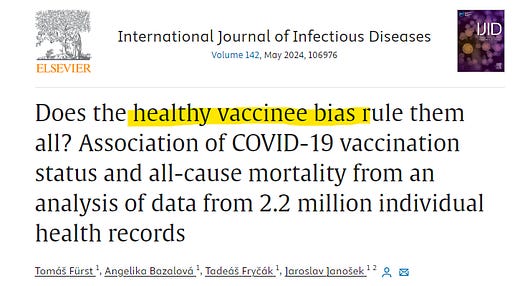





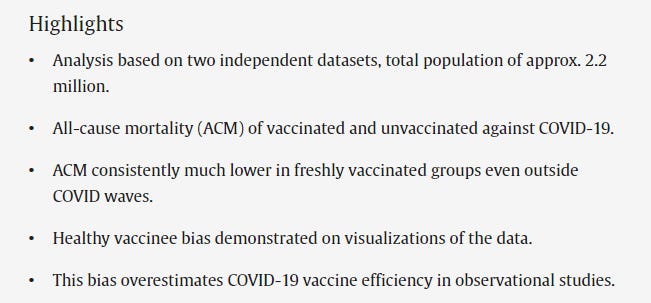
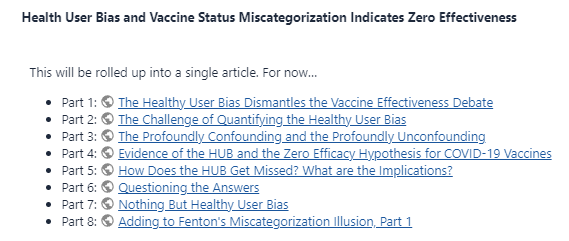
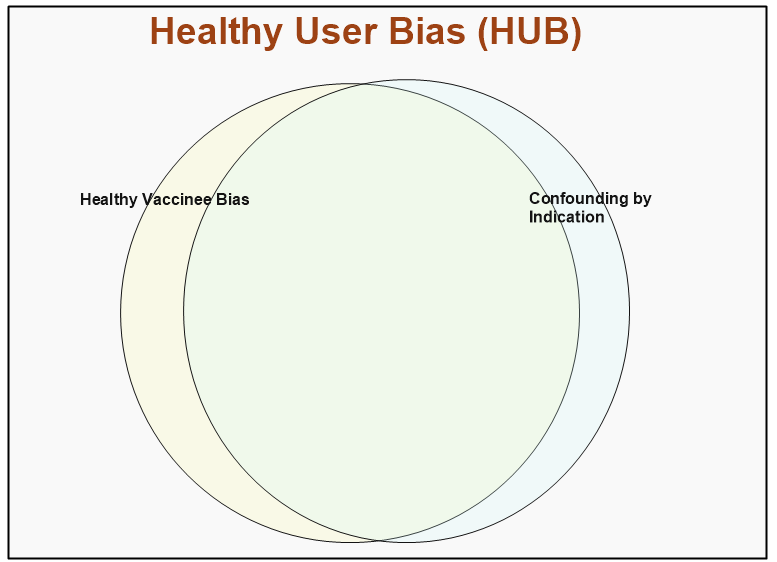
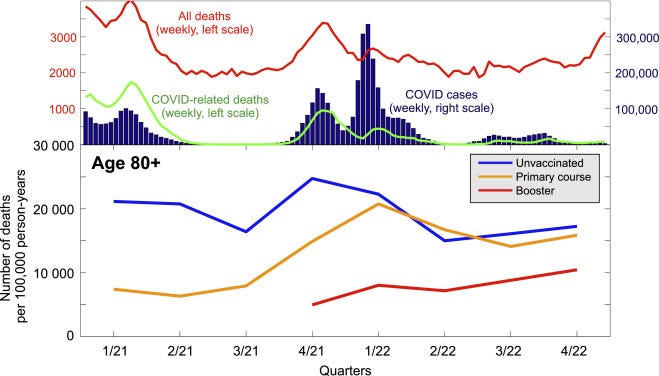
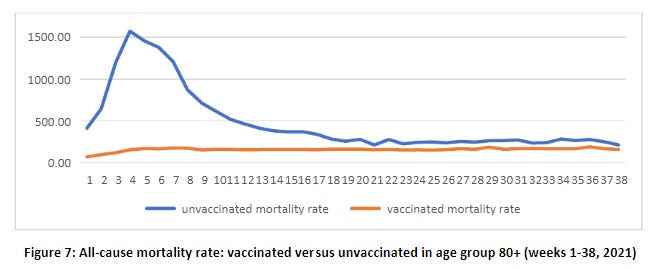
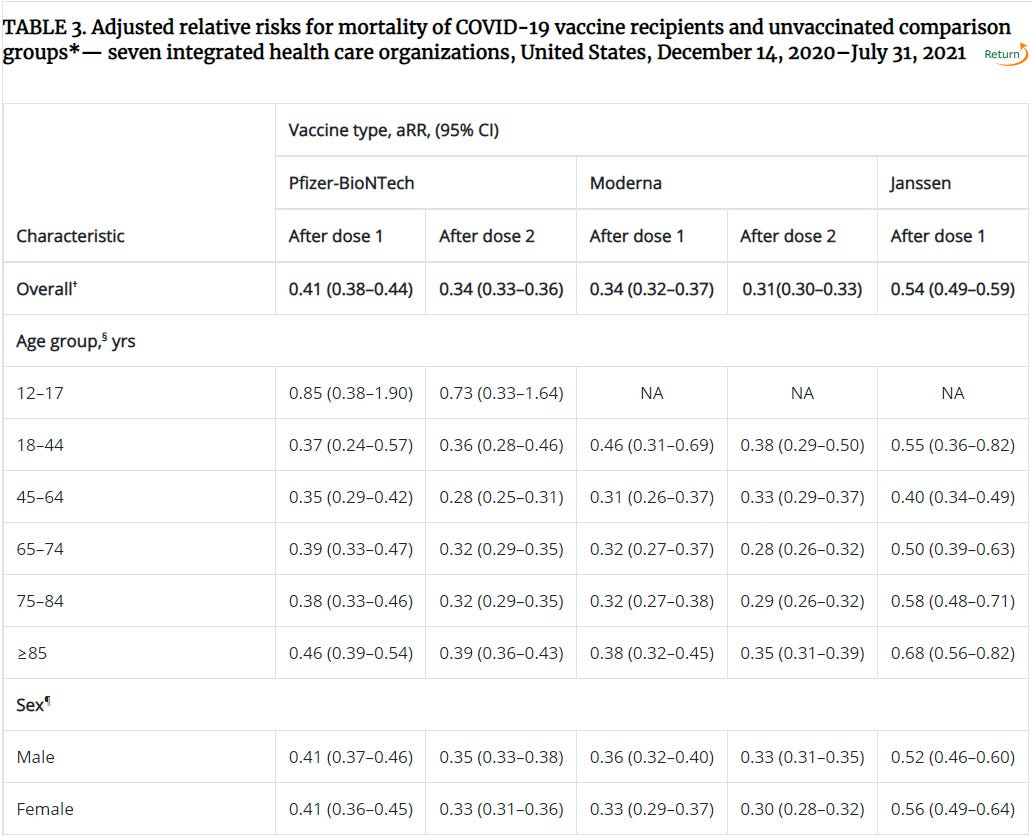


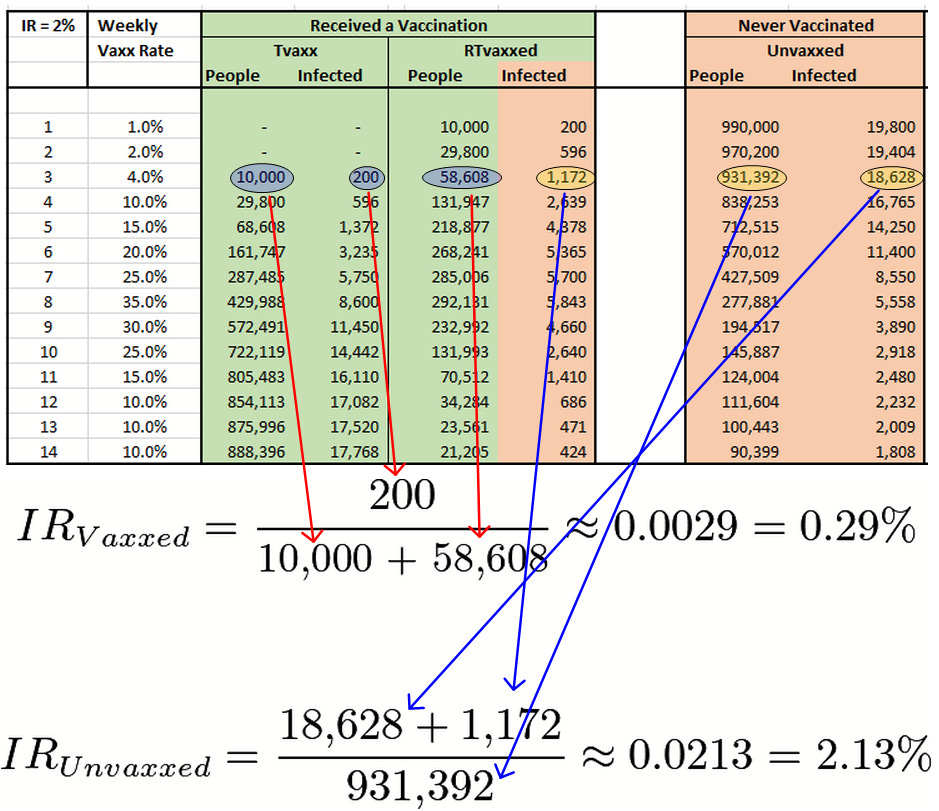

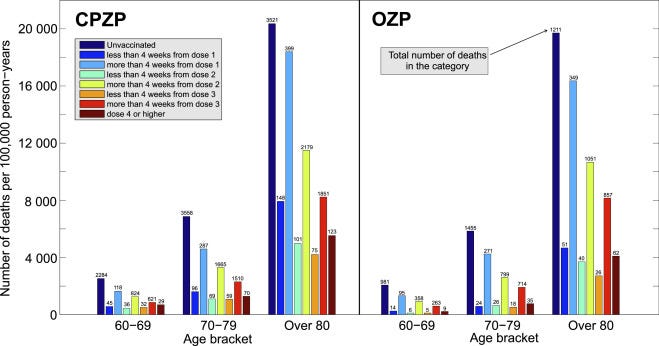


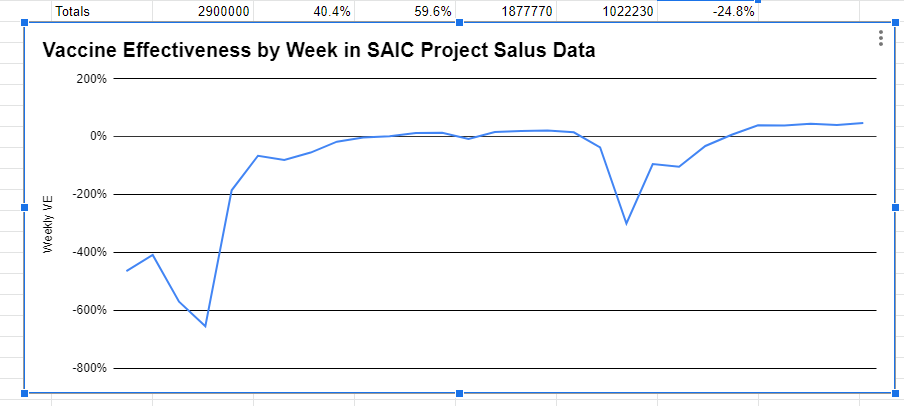


Hello Mathew,
thank you very much for this post! If you ever come to Czech Republic, the beer is on us:)
The HVE is a really fascinating topic. We first noticed it here:
https://smis-lab.cz/2021/12/25/umrti-dle-ockovaciho-statutu-v-roce-2021-data-zdravotnich-pojistoven/
(sorry, it is in Czech but googletranslate does a decent job)
and you may witness our confusion then here:
https://smis-lab.cz/2022/01/07/elixir-mladi/
Since then, we have understood what is going on, and we found a guy in Arizona, who's been telling the HVE story to anyone (willing to listen) for many years:
https://brownstone.org/articles/healthy-vaccinee-bias-letter-to-editor-lancet-regional-health-europe/
Thank you again,
all the best
Tomas Fürst
Very sorry to hear of your continuing illness. Please do what you can to get plenty of sunshine to help yourself heal. God bless you and keep you from harm. Thank you for your work in the service of mankind. Amen.